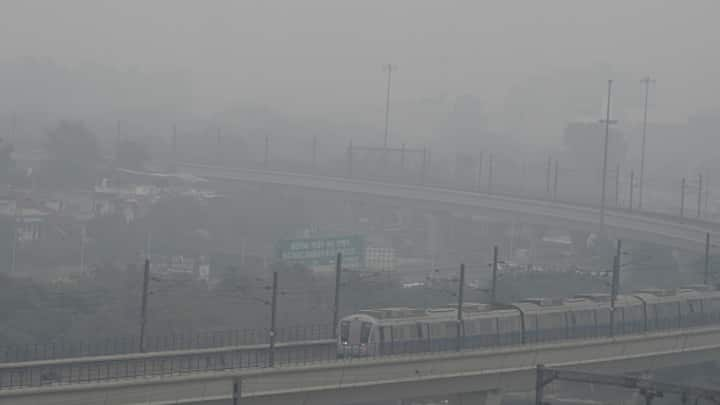The World Air Quality Report 2023, compiled by the Swiss organization IQAir, highlights significant findings regarding air pollution levels globally, particularly focusing on India’s air quality status.
India’s Air Quality Ranking
- In 2023, India ranked third-worst globally in terms of air quality out of 134 countries.
- The average annual PM2.5 concentration in India was 54.4 micrograms per cubic meter.
- This marked a deterioration from the previous year, where India ranked eighth with an average PM2.5 concentration of 53.3 micrograms per cubic meter.
Delhi’s Air Quality
- Delhi was identified as the capital city with the poorest air quality.
- PM2.5 levels in Delhi worsened from 89.1 micrograms per cubic meter in 2022 to 92.7 micrograms per cubic meter in 2023.
- It has been ranked as the most polluted capital city globally for four consecutive years since 2018.
Begusarai’s Pollution
- Begusarai in Bihar emerged as the world’s most polluted metropolitan area.
- It recorded an average PM2.5 concentration of 118.9 micrograms per cubic meter in 2023, not featuring in the 2022 rankings.
Population Exposure
- 1.36 billion people in India were exposed to PM2.5 concentrations, surpassing the WHO’s recommended annual guideline of 5 micrograms per cubic meter.
- 1.33 billion people, around 96% of the Indian population, experienced PM2.5 levels exceeding seven times the WHO annual guideline.
- City-level data revealed that over 66% of India’s cities reported an annual average of over 35 micrograms per cubic meter.
Data Sources
- The report aggregated data from over 30,000 regulatory air quality monitoring stations and low-cost air quality sensors globally.
- These stations and sensors were operated by various entities, including research institutions, governmental bodies, universities, non-profit organizations, and private companies.
Expansion of Data Collection
- In 2023, data was collected from 7,821 locations across 134 countries, regions, and territories, compared to 131 entities in 2022.
Global Impact of Air Pollution
- Air pollution remains a significant threat to human health globally, with one in every nine deaths worldwide attributed to it.
- The World Health Organization estimates around seven million premature deaths annually due to air pollution-related illnesses.
- PM2.5 air pollution exposure can lead to or exacerbate various health conditions such as asthma, cancer, stroke, lung disease, and mental health issues in children.
Multiple Choice Questions:
- Which country ranked third-worst globally in terms of air quality in 2023?
- A) Bangladesh
- B) India
- C) Pakistan
- D) China
- Answer: B) India
- Which city was identified as the most polluted capital globally for four consecutive years starting from 2018?
- A) Karachi
- B) Mumbai
- C) Delhi
- D) Islamabad
- Answer: C) Delhi
- What was the average PM2.5 concentration in Delhi in 2023?
- A) 89.1 micrograms per cubic meter
- B) 92.7 micrograms per cubic meter
- C) 118.9 micrograms per cubic meter
- D) 53.3 micrograms per cubic meter
- Answer: B) 92.7 micrograms per cubic meter
- How many people in India were exposed to PM2.5 concentrations according to the report?
- A) 1.36 billion
- B) 1.33 billion
- C) 0.5 billion
- D) 2 billion
- Answer: A) 1.36 billion
- What percentage of India’s cities reported an annual average PM2.5 concentration exceeding 35 micrograms per cubic meter?
- A) 50%
- B) 66%
- C) 75%
- D) 80%
- Answer: B) 66%
